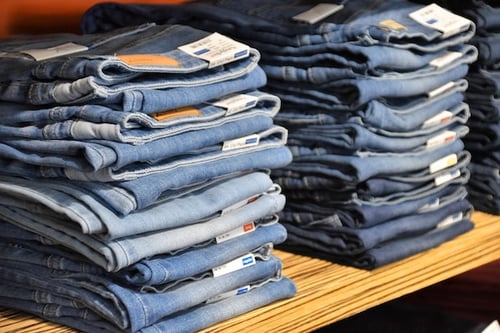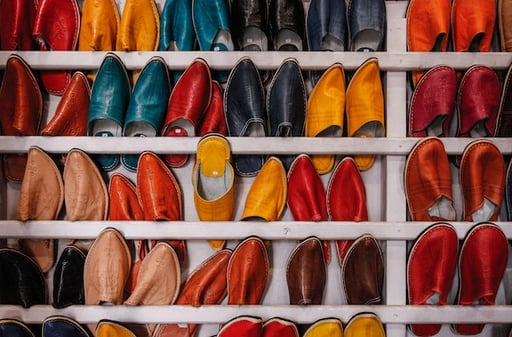On the heels of the devastating economic effects of the COVID-19 pandemic, the fashion industry is beginning to pick up the pieces and build a path forward. Machine learning and AI had already been gaining momentum within the industry and, in order to keep up in today’s increasingly competitive climate, it’s crucial for fashion retailers to take a look inwards to identify potential efficiency gaps in order to remain competitive.
Some of the key themes that fashion retailers will need to keep in mind in the next year include:
- New spending habits in a post-COVID-19 world. In the remote work world, consumers have embraced lounge wear and many have also taken a critical look at their wardrobes, exchanging quantity for quality. This means that inventory management will be more crucial than ever, as items may not fly off the shelves quite as quickly.
- Digital transformation. The move from brick-and-mortar to online shopping was well underway prior to the pandemic and is likely to continue to accelerate. According to a July 2020 Survey from Qubit, one in two consumers currently do more than 75% of their shopping online. More online shopping means that retailers will have more insight into the lifecycle of the customer, but will also need to ensure that the online experience feels analogous to the in-person experience as far as branding and quality of customer service.
- Impact of social media in purchase decisions. Social media use has been consistently growing across the globe over the past decade and has become a crucial component of the online shopping and clothing trend tracking experience. In fact, approximately 74% of consumers use social media to make purchase decisions today. More social media use means more data available to understand your customers, as well as more channels through which to advertise.
- Decreasing customer loyalty. With more avenues to discover new brands online and more sensitivity to price, consumer loyalty is dropping. Recent McKinsey research discovered that 75% of American consumers changed brands during the pandemic. Fashion retailers will need to work even harder to attract and retain customers, and many are exploring different marketing and pricing strategies to do so.
Machine learning can be used in quite a handful of ways within the fashion industry. Some of the key methods, which we will explore in more detail below, include:
- Customized recommendations
- Improved customer support
- Trend forecasting
- Inventory optimization
- Price optimization

Customized Recommendations
Recommendation engines are an excellent tool for generating personalized marketing for retail customers, based on past preferences and predicted future behavior. For example, perhaps customers who purchase a particular black shirt are also very likely to purchase a jean jacket that goes well with it. In this case, that retailer might want to recommend that a customer who has either looked at or purchased the black shirt also checks out the jean jacket by saying “customers who bought this black shirt also purchased this jean jacket.”
This sort of approach allows fashion retailers to customize recommendations for individual users, rather than using more blanket manual or rules-based approaches to target clothing advertisements based on demographics. This means that retailers’ advertisements are much more likely to be effective in leading to a sale, so retailers can be more efficient with their advertising budgets and also reduce returns by recommending items that users are more likely to be satisfied with.
There are a handful of ways to build recommendation engines and the appropriate approach relies on the nature of your data and business goals. Check out this blog post for detail on how this all actually works under the hood.
Improved Customer Support
Chatbot technology has made it easy for retailers to answer simple customer questions — around topics such as return processes and store hours — very quickly and efficiently online. Chatbots can also be used to provide style advice, which is an excellent way for retailers to collect more information about customers to improve marketing tactics and inform general trend analyses.
Chatbots are made possible by using Natural Language Processing (NLP), a subfield of AI that enables computers to process and understand human language by converting it into a numerical format. Thanks to recent developments in deep learning approaches to NLP, chatbots have developed substantially in the last couple of years and will continue to evolve in their ability to understand and process human language. While not perfect, they’re a great solution for retailers looking to speed up customer response times as well as free up professional resources for more strategic tasks.
Trend Forecasting
Social media has become an increasingly crucial factor in driving retail purchase decisions in the last few years. Retailers can analyze social media activity (posts, comments, and likes), blog post topics, and search engine patterns in order to forecast consumer preferences.
For example, if the hashtag #tie-dye is gaining popularity or image recognition technology shows that people are posting more and more images of tie-dye clothing, it might be safe to assume that this is a new upcoming trend. Fashion experts can use this sort of data to make more informed decisions around new products, rather than needing to rely strictly on a much more manual approach of assessing fashion shows and fashion magazines. H&M has relied heavily on big data, including social media data, to more accurately forecast upcoming trends, and many other retailers are starting to follow suit, no pun intended.
Analysis of social media data for trend forecasting can leverage a wide array of ML techniques including NLP, deep learning for image recognition, and classic supervised learning methods for prediction.
Inventory Optimization
One of the most common issues that fashion retailers face is around inventory management. If you order too much of a particular item, you’ll have unsold inventory that you’ve wasted money producing or need to discount very drastically to get off the shelves before it’s out of style. On the other hand, if you order too little, you’ll lose out on potential sales and also hurt the retail experience for your customers, as it’s an unpleasant customer experience to find an article of clothing you love, only to realize it’s out of stock in your size.
Inventory optimization is primarily a demand forecasting problem. We need to predict how much of each SKU will be sold in a certain period of time and then stock warehouses appropriately. There are quite a handful of approaches to forecasting demand. One common approach uses time series analysis to analyze fashion trends with any sort of temporal element. Social media data as well as any other alternative data sources, such as store receipts or foot traffic data can also absolutely be used to enhance SKU-level forecasting. Note that this forecasting can also be done at the geographic or store level for more detailed inventory optimization.

Price Optimization
As consumers continue to move from in-store to online shopping, price comparison becomes easier and price optimization has become crucial in helping retailers stay ahead of the market. Price optimization enables retailers to set ideal prices and markdowns for products to get products off the shelves faster and maximize revenues.
Traditionally, retailers often used broad price markdowns at certain times of the season or leveraged market research to inform pricing decisions, but machine learning enables a much more sophisticated approach. This essentially consists of two steps: first, forecasting sales, and second, optimizing prices.
In forecasting sales, we’ll want to predict the quantity of sales for each SKU and store, given past trends, as we would for inventory optimization. Once we’ve predicted sales quantities over a certain period of time, we can then work to optimize prices by toggling tradeoffs between stock and margin while adhering to certain legal and business constraints, such as a maximum amount of discount per category. There will always be a tradeoff between discounting heavily to move items off the shelf before going out of style and also ensuring that discounts aren’t so steep that they have a net negative impact on profits.
What to Do From Here?
Take a critical look at your current processes and identify room for improvement. Are you noticing lots of leftover inventory at the end of the season or a growing social media presence which has been untapped from a data perspective? It may be time to invest in AI to ensure longevity for your brand and ensure that you stay ahead of the increasing competition.




